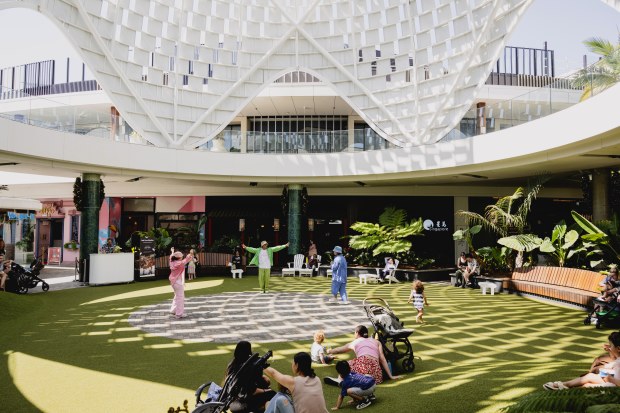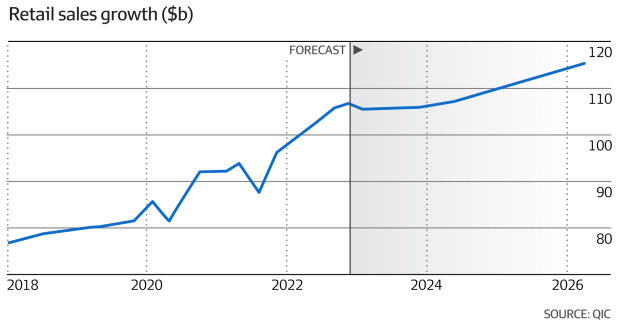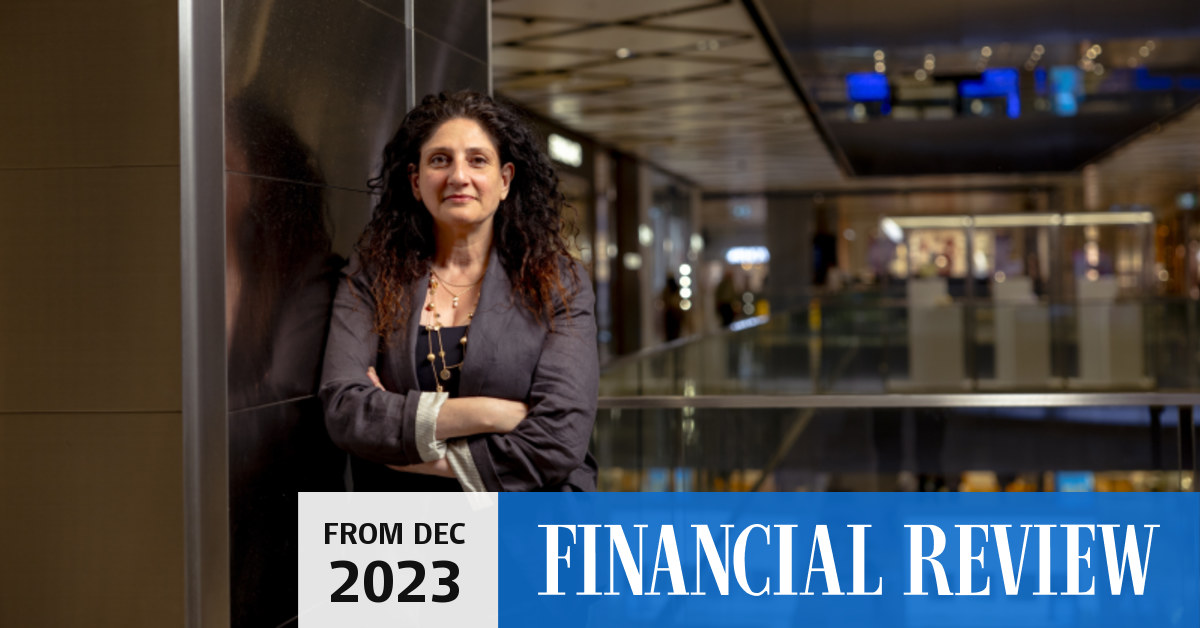At Westfield Knox, where Myer moved out two years ago, Scentre is nearing completion on a $355 million overhaul, part of which includes facilities not usually associated with large shopping centres. There is a basketball court, a swim school and a public library. And plenty of new shops.
Scentre has previously said some 44 per cent of its tenants were “experience-based offerings” – dining, entertainment, health and beauty – which had to be consumed at the shopping centre. That’s kept customer numbers in malls rising, and now more than 500 million annually.
(A David Jones spokesman said the retailer would hand back one floor at Bondi Junction in mid-2025 in line with an “optimisation program” that will include new investment in other parts of the store. It will, however, mean the closure of the food hall and Bondi café, it confirmed.)
Saruchi Khattar, 42, is the owner of Celebrity Ink, a tattoo parlour that opened in Westfield Doncaster, in Melbourne’s northeast, in June.
More daily needs, more services
There aren’t too many tattoo parlours in large shopping centres, she says. “The idea behind it is the tattoo industry has a certain kind of perception, and it’s not that inviting. But if you have it in a shopping centre, it makes it more inviting and people view tattoos as a fashion statement and way of telling stories instead of previous connotations,” Khattar says.
For Lou Pirenc, the head of real estate research at Jarden, it was the pandemic that forced a real rethink “about what the mall should look like”. “What happened was a remixing. More daily needs, more services,” he says.
One prime example of a successful change has been the introduction of Lego stores in Australia. There are now 22 Lego-certified stores, most of which include giant 3D models, storytelling tables and miniature factories.
The Lego store in Sydney’s CBD before it opened last month. Stores like Lego are attracting people back to shopping areas. Wolter Peeters
“As late, some retailers probably pay less rent compared to pre-COVID, but they attract the crowds. Lego stores nowadays are a good example of that as people go there because kids like to do browse,” Pirenc says.
When Lego’s flagship Sydney CBD store opened in Pitt Street last month, queues snaked down the block. Shoppers waited up to two hours.
Other noticeable changes, Pirenc adds, include the addition of personal services like massage parlours, cosmetics and laser clinics. More dining options – including entire precincts – are also appearing. Recently reworked dining precincts have opened at Westfield Mount Druitt, Vicinity’s Northland, Chadstone and Bankstown Grand Market centres and at the Queensland Investment Corporation-owned Canberra Centre.
Dining precincts typically offer a variety of gourmet and international cuisine. In Sydney’s east, they target customers who are willing to spend $15 on an artisanal sandwich or in western Sydney, they grab customers’ attention with meals inspired by Asian open-air markets. In contrast to food courts in older shopping malls, these areas generally avoid national fast-food chains, favouring local restaurateurs and modern decor.
Michael O’Brien, QIC’s managing director, is on the same page as Scentre when it comes to department stores. They’ve long been a loss-leader and the traffic they provided no longer makes up for the amount of space they use.
“The dynamic has changed quite significantly, and department stores are no longer viewed as destinations. We’re seeing very strong performance from the mini-majors, so we’re effectively able to release some of that beatbox space that’s no longer required by department stores,” O’Brien says.
At QIC’s Blacktown Westpoint, the departure of Myer across two levels of the centre made way for new and relocated mini-major tenants including Cotton On, JB Hi-Fi and Uniqlo. At Vicinity’s Queen Street Mall in Brisbane, where Myer left this year, the space is being redeveloped with entertainment as a main drawcard.

One of the redeveloped areas at Westfield Chermside, with a live performance. Jamila Toderas
QIC is positioning its malls to be more like town centres, O’Brien says. That has protected Australian assets from challenges facing shopping centre landlords in other countries such as the US. There, malls have been focused entirely on retail and often located far from homes, leaving them exposed.
That has left some US centres in serious trouble. One, the Crystall Mall in Connecticut, was valued at $US153 million in 2012. It sold at a foreclosure auction this year for $US9.5 million ($14.4 million). Green Street, a research firm, reported some malls were now worth 70 per cent less than in 2016.

By comparison, some of Australia’s biggest retail portfolio values have stabilised in the past year – Scentre property values fell 0.6 per cent in its last financial year. GIC’s deal to sell half of Chatswood Chase to Vicinity for $307 million was a hefty 45 per cent discount to the price it paid in 2017, it was only 6 per cent below the value of the mall on its books.
Supermarkets, long the focus of smaller, neighbourhood centres, are taking up more space in their larger peers. At neighbourhood malls, supermarkets’ share of space has also climbed – to 51 per cent from 46.1 per cent.
However, demographic changes could reduce the number and regularity of customer visits even to supermarkets, Hamilton Property Consultants, a retail advisory group, told clients recently.
“If the younger shoppers continue to shop online as they grow older the proportion of supermarket shopping conducted online would be expected to increase, resulting in reduced foot traffic in shopping centres,” the analysts wrote in a note. Hamilton expects more “click and collect” facilities will pop up in shopping centres to meet this change in shopping preference.
In some locations, supermarket operators will develop purpose-built fulfilment centres adjacent to their stores, the analysts suggest.
And while large shopping centres have made significant changes to the mix of shops, smaller malls have proved to be the most resilient.
“You haven’t seen as much of a change because the neighbourhood centre was already focused on daily needs and services related,” says Jarden’s Pirenc.
“They traded really well because they were offering essential services, and they’re even closer to where people live and therefore have seen less change.”
The resilience of neighbourhood centres, largely because of their unchanging nature, means they are coveted by investors, says Rob Ellis of PAR Group, a research firm specialising in real estate.
While there has been a modest upturn in transactions of larger shopping centres over the past three months, the volume and value of transactions are still well down and reflect a continuing bias towards smaller shopping centre outlets, Ellis says.

